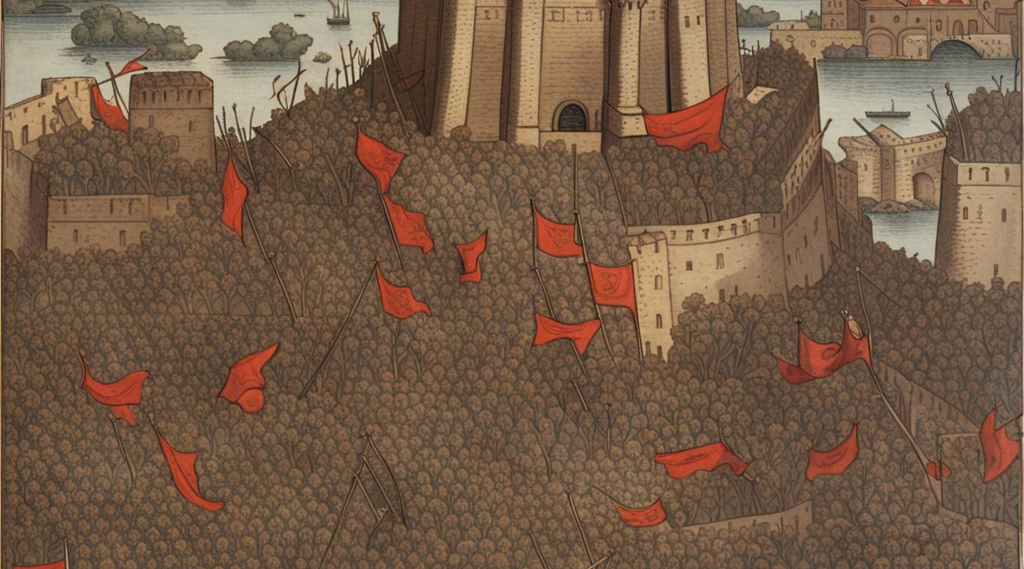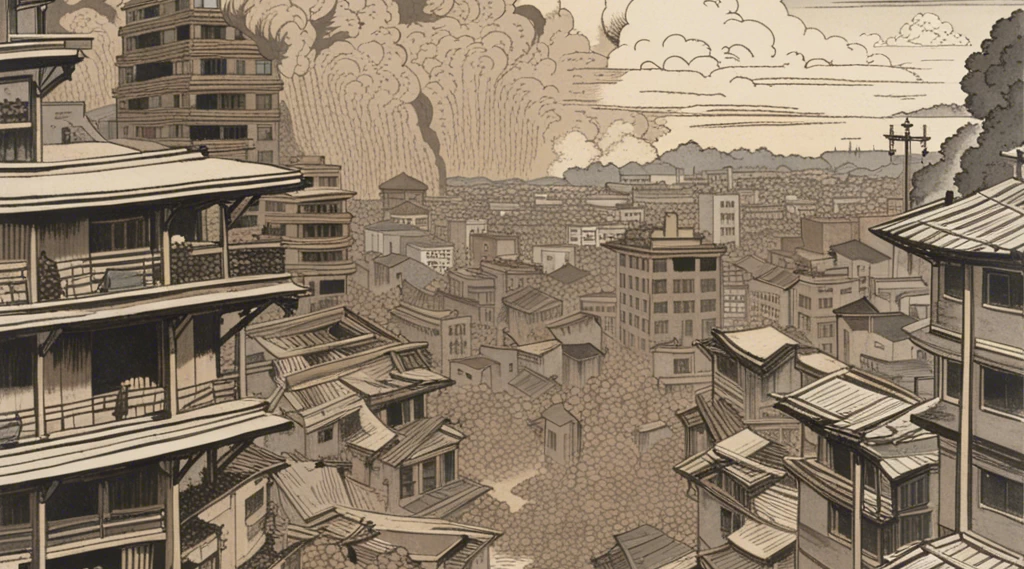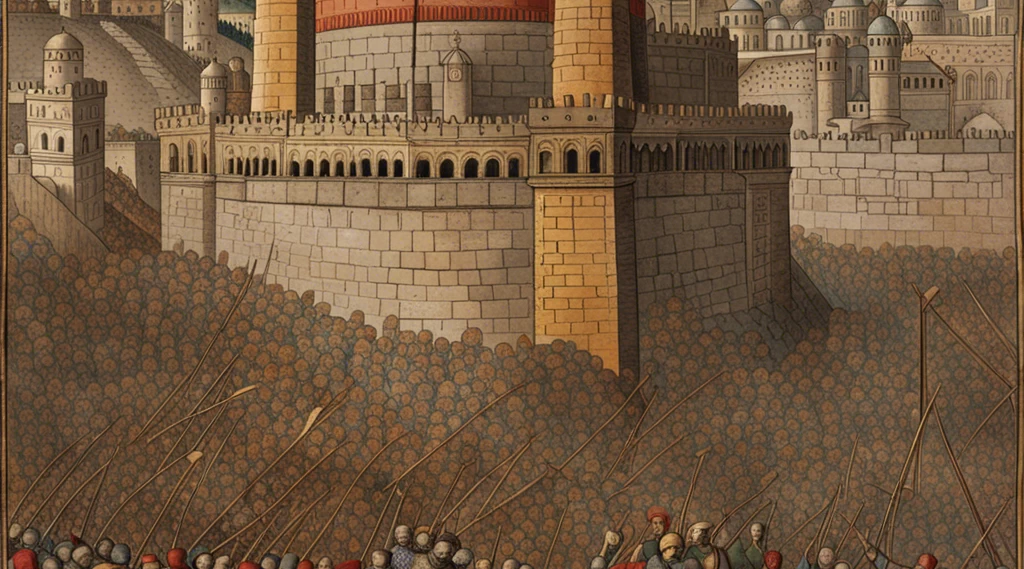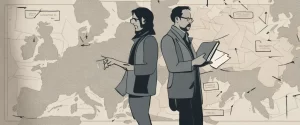– Hiroshima & 1453
Literature has the remarkable ability to transport us to different times and places, allowing us to gain a deeper understanding of historical events and their impact on humanity. Two works that epitomize this power are John Hersey’s “Hiroshima” and Roger Crowley’s “1453.” While these books explore vastly different periods in history, they share a common theme of catastrophic events that forever altered the course of human existence.
In “Hiroshima,” Hersey meticulously chronicles the experiences of six survivors of the atomic bombing of Hiroshima during World War II. On the other hand, Crowley’s “1453” presents an account of the fall of Constantinople to the Ottoman Turks, marking the end of the Byzantine Empire. Both narratives provide invaluable insights into the consequences of war and the resilience of those who endure unimaginable hardships.
This comparative study aims to delve into the similarities and differences between “Hiroshima” and “1453,” examining how these two books illuminate the effects of large-scale destruction on individuals, communities, and societies. Through a careful analysis of both works, we will unravel the common threads that bind them together and shed light on the universal human experiences that emerge from such catastrophic events.
Our exploration will center around three main aspects: the portrayal of the events and their aftermath, the resilience and survival mechanisms displayed by the affected individuals, and the broader historical and cultural implications of these calamities. By examining these dimensions, we hope to not only comprehend the devastating impact of war but also uncover the strength and spirit of humanity that often emerges from the darkest chapters of our shared history.
Through this comparative study, readers will be able to gain a deeper appreciation for the complexities of human suffering and resilience in the face of overwhelming adversity. By juxtaposing the stories of those affected by the atomic bombing of Hiroshima with those who lived through the fall of Constantinople, we aim to shed light on the profound consequences of historical events and draw connections between seemingly disparate moments in time.
Join us on this journey as we navigate the pages of “Hiroshima” and “1453,” exploring the shared human experiences that transcend time and place. Together, we will uncover the universal truths that emerge from these narratives and reflect upon the lessons they impart for our collective understanding of history and humanity itself.
Summary of Two Books
Hiroshima
Hiroshima” is a non-fiction book written by John Hersey, first published in 1946. It tells the tragic and poignant stories of six survivors of the atomic bombing of Hiroshima on August 6, 1945, during World War II. The book explores the immediate aftermath of the bombing and the long-term effects on the lives of those affected.
Hersey begins by introducing the six individuals from different backgrounds: two doctors, a minister, a widowed seamstress, a Catholic missionary, and a young German Jesuit priest. He vividly describes their experiences before, during, and after the bombing, painting a harrowing picture of the destruction and suffering caused by the atomic bomb.
The narrative follows each survivor as they struggle to cope with injuries, loss of loved ones, and the challenges of living in a devastated city. Hersey delves into their personal histories, sharing intimate details of their lives and their remarkable resilience in the face of adversity. Through their stories, he sheds light on the physical, emotional, and psychological trauma inflicted upon the victims and the city itself.
Hersey also explores the broader context of the atomic bomb, providing historical background and discussing the decision-making process that led to its use. He raises moral questions about the devastating power of such weapons and their impact on humanity.
Overall, “Hiroshima” offers a powerful and compassionate account of one of the most catastrophic events in human history. By humanizing the survivors and presenting their stories in a sensitive manner, Hersey’s book serves as a reminder of the horrors of war and the importance of striving for peace.
1453
1453″ is a historical non-fiction book written by Roger Crowley that focuses on the pivotal events leading up to and surrounding the fall of Constantinople. The book presents a detailed account of the siege and capture of the great Byzantine capital by the Ottoman Empire in the year 1453.
The narrative takes readers on a captivating journey through the political, military, and cultural landscape of the time, providing a comprehensive understanding of the build-up and consequences of this significant event. Crowley delves into the key historical figures involved, their motivations, and the strategies they employed during the siege.
The story begins with an exploration of the Byzantine Empire’s decline, highlighting its vulnerability amidst internal strife, religious schisms, and external pressures from the expanding Ottoman Empire. The rise of Sultan Mehmet II, the ambitious young Ottoman ruler, is examined, as he sets his sights on conquering Constantinople, a city that had withstood numerous sieges throughout history.
Crowley masterfully depicts the relentless preparations made by Mehmet II and his forces, showcasing their technological advancements, engineering expertise, and sheer determination to conquer the city. Meanwhile, he also portrays the desperate situation faced by Emperor Constantine XI and the Byzantines, who mustered a final defense in the face of overwhelming odds.
As the narrative unfolds, the author meticulously describes the siege itself, shedding light on the brutal warfare techniques used, such as the construction of massive cannons and underground tunnels. The tension escalates as the Ottoman army relentlessly pounds the city walls, while the Byzantines employ every means at their disposal to repel their attackers.
Ultimately, Crowley chronicles the climactic moments when the Ottoman forces penetrate the city defenses, leading to the fall of Constantinople. This pivotal event not only marked the end of the Byzantine Empire but also had profound implications for European history, inspiring great powers to embark on a new era of exploration and discovery.
Throughout “1453,” Roger Crowley skillfully combines historical accuracy with engaging storytelling, transporting readers back in time and immersing them in the dramatic events that unfolded during this crucial period. The book serves as a testament to the resilience and tenacity of both the conquerors and the conquered while providing valuable insights into the wider consequences of the fall of Constantinople in shaping the course of history.

Comparison Between Two Books
Similarities in War
Although “Hiroshima” and “1453” are set in different time periods and focus on different events, they both explore the theme of war and its impact on individuals and societies. Here are some similarities between the two books:
Devastating Consequences:
Both books highlight the devastating consequences of war. “Hiroshima” depicts the horror and aftermath of the atomic bombing of Hiroshima during World War II, while “1453” describes the siege and fall of Constantinople to the Ottoman Empire. In both cases, the cities and their inhabitants experience immense destruction, suffering, and loss of life.
Human Tragedy:
Both books emphasize the human tragedy caused by war. “Hiroshima” follows the lives of six survivors who share their experiences and struggles in the wake of the atomic bomb. Similarly, “1453” portrays the desperation and resilience of the defenders and citizens of Constantinople facing a siege that would alter the course of history. Both books depict the human capacity to endure suffering and rally against overwhelming odds.
Cultural Heritage:
Another similarity lies in the exploration of cultural heritage. While “Hiroshima” captures the destruction of a city deeply rooted in Japanese culture, “1453” focuses on the fall of Constantinople, an iconic city representing the last remnants of the Byzantine Empire’s rich cultural heritage. Both books underline the irreparable loss of cultural treasures and the erasure of centuries-old legacies due to the ravages of war.
Historical Context:
Both books provide historical context for the wars they portray. “Hiroshima” delves into the events leading up to the atomic bombing, including the escalation of World War II and the development of nuclear weapons. Similarly, “1453” offers insights into the political, religious, and military factors that led to the siege of Constantinople and its significance in the context of the Ottoman Empire’s expansion.
Individual Perspectives:
Both books prioritize individual perspectives to tell their stories. “Hiroshima” focuses on the personal experiences of the survivors, allowing readers to empathize with their struggles and understand the human impact of the bombing. In a similar vein, “1453” provides accounts from various individuals involved in or affected by the siege, offering a multifaceted view of the conflict.
Despite the differences in time periods and specific events, “Hiroshima” and “1453” effectively convey the horrors of war, the resilience of individuals, and the profound impact of these conflicts on society and culture.
Divergence in War
Both “Hiroshima” and “1453” are books that explore different aspects of war, but they focus on distinct historical events that took place in different parts of the world. Here are some divergences regarding the wars depicted in these books:
Historical Context:
“Hiroshima”: The book “Hiroshima” by John Hersey recounts the events surrounding the atomic bombing of Hiroshima, Japan, during World War II. It provides a detailed account of the experiences of six survivors and offers insights into the devastating impact of nuclear warfare.
“1453”: On the other hand, “1453” by Roger Crowley narrates the events leading up to and including the fall of Constantinople (modern-day Istanbul) to the Ottoman Empire. This marked the end of the Byzantine Empire and had significant consequences for the region’s politics, religion, and culture.

Scale and Impact:
“Hiroshima”: The atomic bombing of Hiroshima was a singular event that resulted in immense loss of life and widespread destruction. The book emphasizes the personal stories of individuals affected by the bombing, highlighting the human cost of war and the long-term physical and psychological effects suffered by survivors.
“1453”: In contrast, the siege and conquest of Constantinople represented a strategic turning point in history. It led to the collapse of the Byzantine Empire and the establishment of the Ottoman Empire as a major power. The repercussions of this event extended far beyond the immediate devastation and shaped the course of European and Middle Eastern history.
Nature of Conflict:
“Hiroshima”: The conflict depicted in “Hiroshima” was a global war involving numerous nations, with Japan being one of the Axis powers. The book primarily focuses on the experience of ordinary civilians caught in the crossfire, highlighting the moral and ethical dilemmas associated with the use of atomic weapons.
“1453”: In contrast, the conflict portrayed in “1453” was primarily a struggle between two empires: the Byzantine Empire and the Ottoman Empire. It highlights the military tactics, political maneuvering, and technological advancements that played a role in the siege, showcasing the clash of civilizations and ideologies.
Geographical Context:
“Hiroshima”: The events of “Hiroshima” occurred in Japan, specifically in the city of Hiroshima. This book provides a localized perspective on the effects of war, focusing on how a single act of aggression impacted a specific community and its inhabitants.
“1453”: In “1453,” the focus is on the Eastern Mediterranean region, particularly Constantinople. The book explores the geopolitical dynamics of the time and sheds light on the cultural and religious diversity present in the city.
In summary, while both “Hiroshima” and “1453” delve into the topic of war, they differ in terms of historical context, scale and impact, nature of conflict, and geographical setting. These divergences provide unique insights into the complexity of warfare throughout different periods and regions.
Conclusion
Determining which book is more worthy of reading, “Hiroshima” or “1453,” ultimately depends on your personal interests and preferences. Here’s a brief overview of both books to help you make an informed decision:
“Hiroshima” by John Hersey:
This non-fiction book recounts the experiences of six survivors of the atomic bombing of Hiroshima during World War II.
It offers a poignant and detailed account of their lives before, during, and after the bombing, providing insights into the human cost of nuclear warfare.
If you are interested in historical events, World War II, or human stories that explore the consequences of war, “Hiroshima” could be a compelling read.
“1453: The Holy War for Constantinople and the Clash of Islam and the West” by Roger Crowley:
This historical book focuses on the siege and fall of Constantinople (now Istanbul) in 1453, marking the end of the Byzantine Empire.
It delves into the political, religious, and military aspects of the conflict between the Ottoman Empire and the Christian defenders of the city.
If you enjoy reading about medieval history, military strategies, or the clash between different civilizations, “1453” might be an intriguing choice.
Ultimately, consider your personal interests, the subject matter that appeals to you the most, and the type of reading experience you seek. Both books offer valuable perspectives on significant historical events, so it would be worth choosing the one that resonates with your interests and piques your curiosity.



